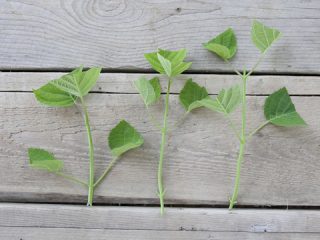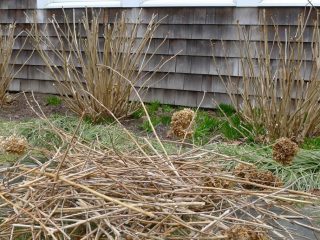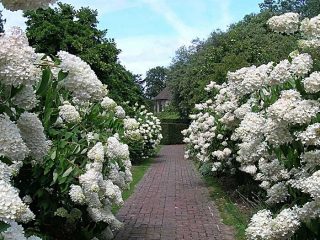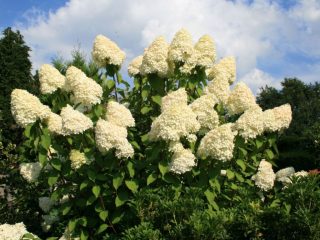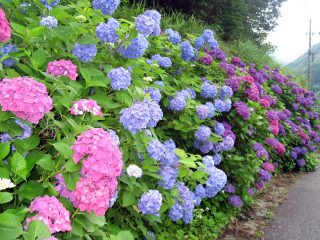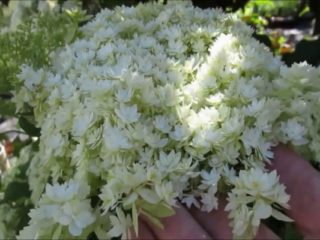Content
Hydrangea climbing Miranda is one of the most beautiful plant varieties. It is distinguished by its beautiful appearance; it is a deciduous vine that climbs walls, trees, and also creeps along the ground. The winter-hardy plant is not afraid of winds and loves moisture. Taking care of it is not difficult.
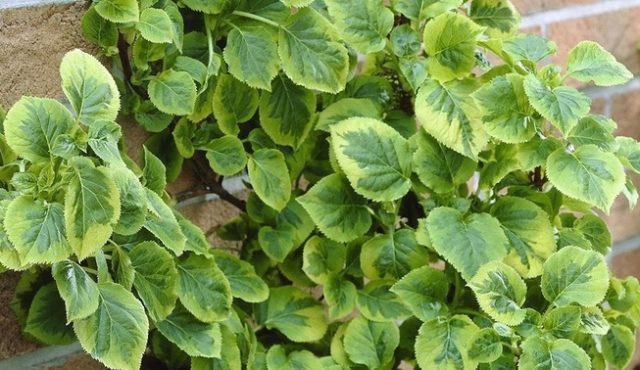
Miranda differs from other varieties in its vine-like structure
Description of hydrangea Miranda
Hydrangea Miranda does not have a trunk, but it has aerial roots, with the help of which it “crawls” up all kinds of supports - walls, fences, trees. The foliage is green-light green, shiny, jagged. The veins are clearly visible in the center. The leaves of the petiolate hydrangea Miranda are small in size; together with the stem they form a vine, about 4.5 m long. In autumn, the foliage turns golden yellow and falls in November.
The inflorescences are usually white, flat, about 25 cm in diameter.Individual flowers are only 2 cm in diameter and emit a sweet scent, attracting bees.
Hydrangea petiolate Miranda in landscape design
Hydrangea variety Miranda has won the hearts of many gardeners, both amateurs and professionals. It is successful when grown in parks, where gazebos will serve as a frame for vines.
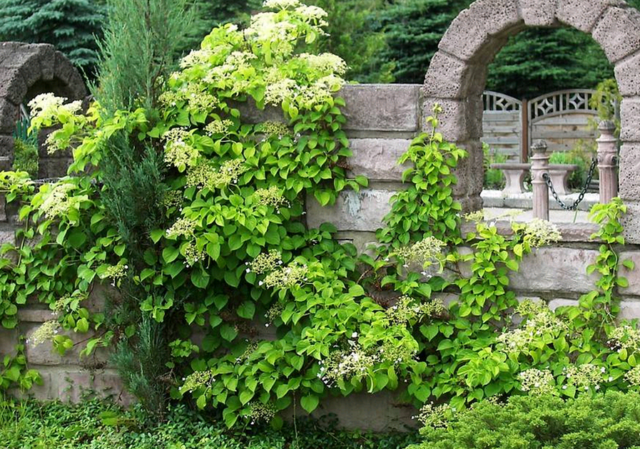
Miranda decorates country and garden plots, small vegetable gardens, “climbing” nearby trees and creeping along the ground
Craftsmen use some tricks to give the Miranda hydrangea its shape, despite the fact that it is not a shrub or tree. To do this, they create artificial frames along which Miranda will weave and stretch as high as possible.
Winter hardiness of hydrangea Miranda
All kinds of hydrangea varieties are considered winter-hardy. Liana Miranda is no exception; she tolerates frost well.
However, young plants require a little work. Firstly, the vines are removed from the frame, support and other surfaces, spruce branches are placed under it, and covered with burlap or other auxiliary materials on top.
Planting and caring for hydrangea Miranda
Hydrangea variety Miranda is moisture-loving, responds well to fertilizing, and needs pruning. It is noteworthy that she loves soft water and gentle soil. The planting sites should have diffused light, and the plant need not be touched during the winter.
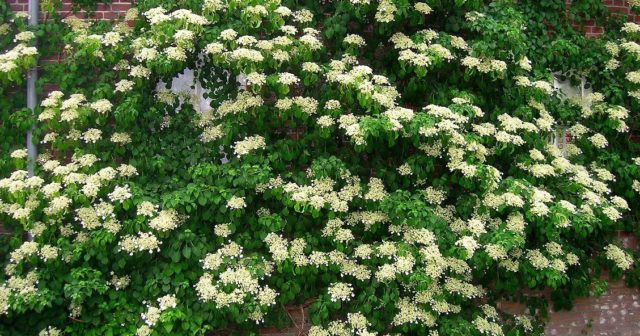
Blooming Miranda spreads over a wide perimeter
Selection and preparation of a landing site
Hydrangea variety Miranda is considered wind-resistant. She also loves the sun, but the foliage may fade.Therefore, it is customary to plant it in a place where the sun’s rays will be direct, diffused and in partial shade for some time. If a gardener wants a hydrangea to grow upward, then it needs to be provided with support, usually trees, house walls, or arches. However, it is worth remembering that Miranda is moisture-loving, so you should not plant it next to large trees and dense shrubs so that they do not take away soil water. But you can bring the vines to the tree trunk yourself.
The flower can also play a good role as a ground cover option.
Landing rules
Miranda hydrangea is planted in early spring or autumn. Preference should be given to 2-3 year old seedlings. If the gardener chooses group seedlings, then the distance between them should be at least 1 m.
The planting hole is dug 50 cm deep, 40 cm long and wide. It is important to provide it with a good drainage system. A 10 cm drainage layer of pebbles, expanded clay and other suitable material is placed at the bottom.
Until permanent planting, the hydrangea is kept in an equal mixture of peat, sand and soil. The soil for the Miranda variety should be light, fertile, and acidic. 10-15 cm of the mixture is laid out on the drainage system, for which humus (2), fertile soil (2), peat (1) and sand (1) are mixed. Before planting, it is important to straighten, moisten and place the roots in the hole. Sprinkle soil on top and compact it well to avoid voids.
If hydrangea is planted from a container, the depth of the hole should be 2 times the container.
Watering and fertilizing
Immediately after planting, the hydrangea is watered abundantly, then the surface is mulched with peat chips and crushed bark.This way the plant will retain moisture longer. The water should be soft, ideally rainwater. If running water is used, then this option should sit and warm up. Sometimes a little lemon juice is added to this water.
During drought, water weekly, 2 buckets per branch. It is also necessary to spray the vines. Do this early in the morning or after the scorching sun sets.

Hydrangea loves moisture, so you should not skimp on watering.
Fertilizing is carried out monthly using complex mineral fertilizers. Sometimes they are mixed with organic ones.
Pruning Hydrangea climbing Miranda
In cases where a gardener grows vertical hydrangeas of the Miranda variety, it must be pruned regularly. During this process, the main stems are tied up and “directed” along the desired growth path. The excess is cut off, giving freedom to new shoots. In order for the hydrangea to grow as much as possible, in large inflorescences, large-scale pruning is done in early spring, leaving several branches and up to 6 buds on them.
If the hydrangea is grown as a “carpet”, you do not need to trim it, but only remove dead shoots.
Preparing for winter
As already noted, adult specimens do not require special care for the winter. Miranda can withstand 30-degree frosts without covering. Actually, it overwinters under the snow, which creates a kind of greenhouse conditions. You may notice frozen shoots, but they should bloom in the first spring.
As for young plants, they are removed from the support and frames, laid on spruce spruce branches and covered with the same on top. You can use another coating that the gardener prefers. The roots of the vines are mulched.
Reproduction
The most common method of propagating hydrangeas is cuttings. This is done at the beginning of summer, in June.A young cutting up to 15 cm is selected from a lignified shoot. The lower sections are treated with a root growth stimulator, planted obliquely in fertile soil and covered with film or a jar, creating greenhouse conditions. It is important to maintain humidity, regularly ventilate and protect from sunlight. After about a month, rooting occurs.
Another method is propagation by layering. In early May or August, the lower branch of the hydrangea is tilted to the ground, cut in the middle and secured. Lightly add drops at the cut site, and secure the top in a vertical position. By next spring, the buried part promises to take root and become an independent plant; it can be resettled.
Diseases and pests
Every season, hydrangea is treated for pests twice at weekly intervals. The gardener chooses the method - folk, biological, but it is better to exclude the chemical one.
Miranda is often affected by chlorosis - the leaves lose color, becoming light yellow. Potassium nitrate and ferrous sulfate solution will correct the situation.
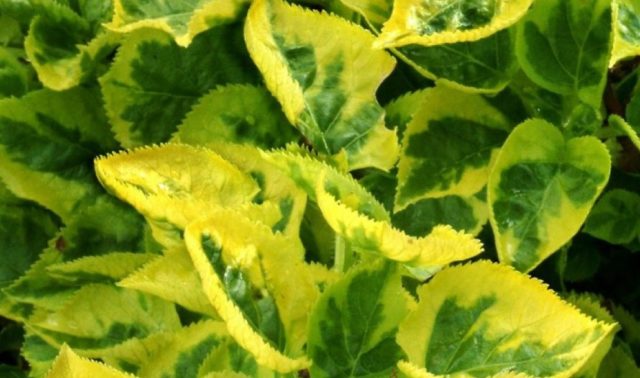
Miranda sometimes suffers from illnesses, in particular, she is susceptible to chlorosis
Dark oily spots may appear on foliage and stems - this is downy mildew. Getting rid of it is quite simple; you need to spray the hydrangea with a copper-soap solution.
There is also a fungal disease on the foliage - gray rot. The leaves are removed and the plant is treated with fungicides.
Conclusion
Hydrangea climbing Miranda is another beautiful variety from the hydrangea family. Like others, it is beautiful in its own way, especially during the flowering period. It endures winter with dignity. Reproduction is easy. And it decorates the area for many years.
Reviews of hydrangea Miranda
https://www.youtube.com/watch?v=oU1aceh2TmA
